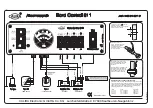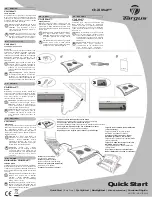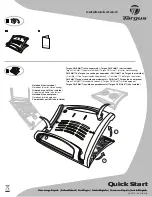
Standard Wing Type
4.
RECEIVER & SERVOS CONNECTION
A3S3 has 7 separate input channels which used to connect to the receiver and 5 output channels for servos, and supports
standard receivers and PPM or Futaba’s S.BUS(or S.BUS 2) single-line receivers. There are 7 different wing type available
for airplane. The connection for servos will vary depending on the wing type selected. However, [A] Aileron, [E] Elevator and
[R] Rudder should always be connected to the receiver in most cases. [PPM/Bus/M] is used to switch the flight mode,
even if you don’t want to change the flight mode during flight, you still need to connect it to a free receiver port to get power
supply for the gyro. [G] is used to adjust the master gain, connecting this channel is not a must if you don’t want to change
the gain by the transmitter. [A2] and [E2] are used for the second aileron and second elevator control channels. If the wing
type currently selected contains only one aileron or elevator servo, [A2] or [E2] will become a pass-through channel
automatically, it means that the input signal applied to [A2] or [E2] will directly be passed to the output channel [OUT4] or
[OUT5] when [A2] or [E2] is unused. It is possible to use them as any other purpose, e.g. throttle, gear or flap.
4.1.
PORT DESCRIPTION
Input Channel
Description
Output Channel
Description
A
To
Aileron
channel of the receiver
OUT1
To aileron servo
E
To
Elevator
channel of the receiver
OUT2
To elevator servo
R
To
Rudder
channel of the receiver
OUT3
To rudder servo
A2
To
Aileron 2
channel of the receiver
OUT4
To the second aileron servo
E2
To
Elevator 2
channel of the receiver
OUT5
To the second elevator servo
G
Remote master gain control
PPM/SBus/M
Flight mode switch channel, PPM or S.BUS input channel, power supply port of the gyro.
4.2.
SUPPORTED WING TYPE
A3S3 supports standard fixed-wing, flying-wing(delta-wing) and v-tail and provides 7 different wing types for you. The
following illustration gives the connection of the servos for each type.









































